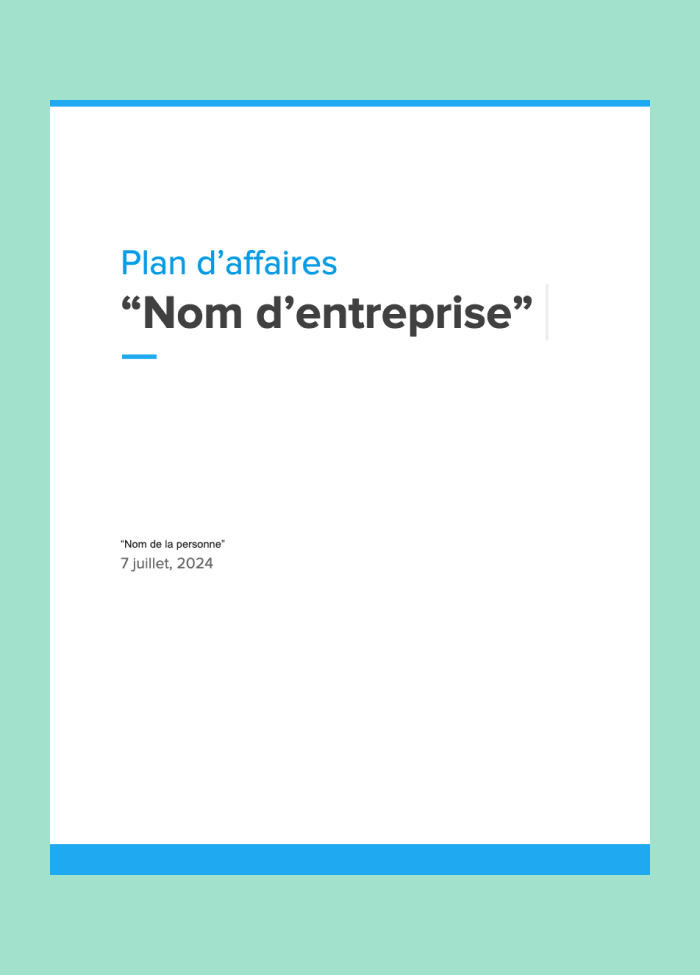Free Business Model Canvas Examples
The Business Model Canvas (BMC) is a useful tool. Millions of entrepreneurs, startups, and organizations use it worldwide. It helps them visualize, test, and improve their business models on one page.
A clear business model is important. This applies whether you are a founder starting your first startup or a manager working on your company's strategy. It can make the difference between success and stagnation.
In this guide, you'll explore a range of free business model canvas examples, learn the basics of using the BMC, and even discover how to generate your own canvas in minutes using AI.
What Is a Business Model Canvas?
Developed by Alexander Osterwalder, the Business Model Canvas is a visual framework that breaks down a business into nine interconnected building blocks. These components allow you to see the comprehensive overview of how a company creates, delivers, and captures value.
The nine blocks are:
- Customer Segments
- Value Propositions
- Channels
- Customer Relationships
- Revenue Streams
- Key Resources
- Key Activities
- Key Partnerships
- Cost Structure
The BMC helps teams outline ideas quickly. It allows them to test their assumptions. Teams can also agree on a strategy without making a long business plan.
Why Use a Business Model Canvas?
Using a Business Model Canvas offers a number of key benefits:
- Clarity: Summarize your entire business model on one page.
- Speed: Quickly iterate and refine your strategy.
- Collaboration: Engage your team in business design.
- Presentation: Communicate your model clearly to stakeholders.
- Flexibility: Update easily as your business evolves.
An essential tool for lean startups, innovation teams, consultants, and even established corporations aims to keep them agile.
The 9 Building Blocks of the Canvas
1. Customer Segments
Who are your most important customers? Define distinct groups based on needs, behaviors, or other traits.
2. Value Propositions
What value do you deliver to each customer segment? What problems are you solving?
3. Channels
How do you reach your customers? Consider physical and digital channels.
4. Customer Relationships
What type of relationship does each segment expect? Personal, automated, or community-driven?
5. Revenue Streams
How does your business earn revenue? Through direct sales, subscriptions, licensing, or ads?
6. Key Resources
What assets are essential to deliver your value proposition? These could be people, tech, intellectual property, or capital.
7. Key Activities
What must the business do exceptionally well? Product development, sales, or customer service?
8. Key Partnerships
Which suppliers or partners help your business succeed?
9. Cost Structure
What are the major costs in your business model? Fixed, variable, economies of scale?
Understanding and aligning these nine components is the foundation of a solid business strategy.
Canvas Model Example: A SaaS Startup
Let’s look at a practical canvas model example for a SaaS (Software as a Service) startup that offers productivity software for remote teams:
- Customer Segments: Small to mid-sized tech companies
- Value Proposition: Streamlined team collaboration and task tracking
- Channels: Direct sales, website, SaaS marketplaces
- Customer Relationships: Automated onboarding, help center, email support
- Revenue Streams: Monthly or annual subscriptions
- Key Resources: Software developers, cloud infrastructure
- Key Activities: Product development, customer support, marketing
- Key Partnerships: Payment processors, integration partners
- Cost Structure: Development, cloud hosting, customer acquisition
This canvas model example is ideal for lean startups focused on product-market fit and recurring revenue.
Business Canvas Example: E-Commerce Store
Now, here's a business canvas example for a direct-to-consumer fashion e-commerce brand:
- Customer Segments: Trendy millennials and Gen Z shoppers
- Value Proposition: Affordable, high-quality clothing with fast delivery
- Channels: Instagram, Facebook, online store (Shopify)
- Customer Relationships: Loyalty programs, social media engagement
- Revenue Streams: Product sales, seasonal promotions
- Key Resources: Inventory, warehouse, brand assets
- Key Activities: Sourcing, fulfillment, digital marketing
- Key Partnerships: Manufacturers, logistics providers
- Cost Structure: Advertising, inventory, shipping, returns
This business canvas example showcases how an online brand leverages social platforms to drive growth.
Business Model Canvas Examples Across Industries
To give you a broader perspective, here are more business model canvas examples from various industries:
1. Restaurant
- Customer Segments: Local diners, foodies, tourists
- Value Proposition: Fresh, local ingredients and a unique dining experience
- Channels: In-person, food delivery apps
- Revenue Streams: Meals, beverages, events
- Key Partners: Local farms, beverage distributors
2. Freelance Graphic Designer
- Customer Segments: Startups, small businesses, marketing agencies
- Value Proposition: High-quality, affordable branding and design
- Channels: Website, referrals, freelancer platforms
- Revenue Streams: Per-project, hourly billing
3. Mobile App
- Customer Segments: Health-conscious consumers
- Value Proposition: Daily meditation and wellness tracking
- Channels: App stores, influencer marketing
- Revenue Streams: Freemium with in-app purchases
Each of these business model canvas examples highlights how different business types can apply the same structure for clarity and strategic planning.
Free Business Canvas Generator Powered by AI
Building a BMC from scratch can be intimidating. That’s why we created a tool that does the heavy lifting for you.
With Plania.ai, you can generate a personalized business canvas example in minutes:
- Answer a few simple questions
- Let our AI fill in each canvas block intelligently
- Export or edit your canvas anytime
Whether you’re preparing for a pitch or exploring a new idea, Plania helps you move faster.
Start for free: Try Plania’s Business Canvas Generator
Download Free Business Model Canvas Templates
Prefer to do it manually? Grab one of our free templates:
- Printable PDF format
- Editable Google Docs or Slides
- PowerPoint for presenting to investors
These resources are ideal for brainstorming, workshops, or classroom use.
FAQ About Canvas Models
What is the difference between a business model and a business plan?
A business model describes how a company operates and makes money. A business plan is a more detailed document, often used to seek funding.
Can I use a business model canvas for a side hustle?
Yes! The BMC is perfect for small-scale ideas and freelancers.
How detailed should my canvas be?
It should provide enough clarity to explain your business to someone in two minutes.
Do I need design skills to make a canvas?
Not at all. You can use templates or Plania’s AI generator.
Conclusion: Bring Your Business to Life
A well-thought-out Business Model Canvas helps you align your team, validate your ideas, and communicate your vision. Whether you’re looking for inspiration or building from scratch, these business model canvas examples can guide your journey.
Explore different canvas model examples, experiment with your own, and iterate fast. With Plania’s free tool, you can skip the blank page and get a head start on your strategy.
Are you ready to get started? Build your Business Canvas with AI today.




